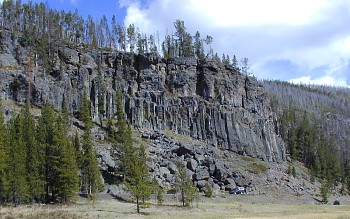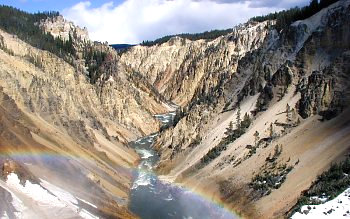
|
|
The superlative hot springs, geysers, and fumarole
fields of Yellowstone National Park are vivid reminders
of a recent volcanic past. Volcanism on an immense
scale largely shaped the unique landscape of central
and western Yellowstone Park, and intimately related
tectonism and seismicity continue even now.
From the Geology of Yellowstone National Park, by Robert L. Christiansen |




Go to the YVO photogallery to see more images that highlight points of volcanic interest in or near Yellowstone National Park.